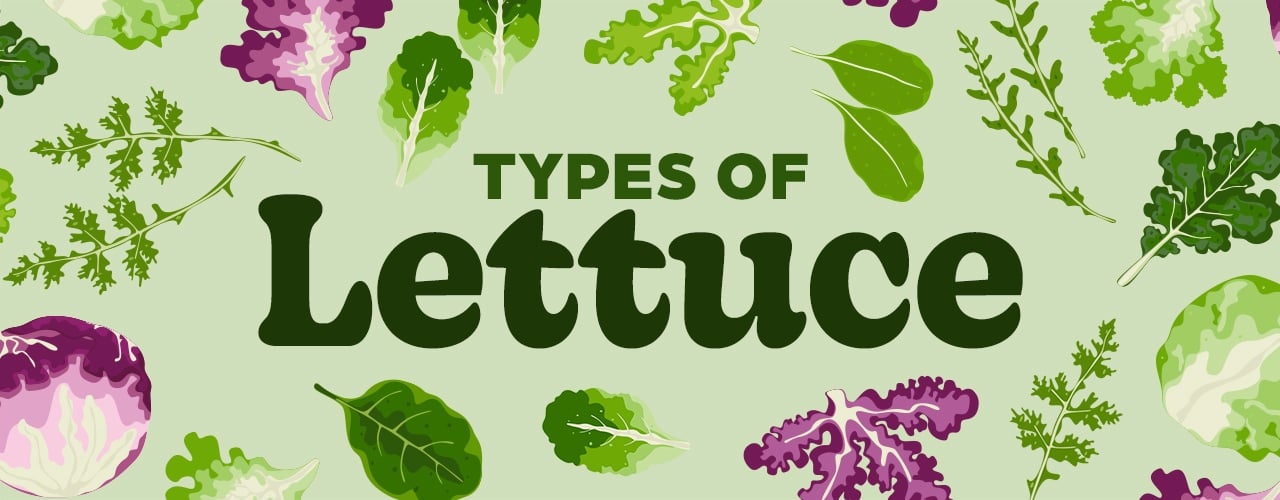
Lettuce is a versatile type of leafy green that comes in many forms. Understanding the different types of lettuce and what sets them apart can help you identify the best ingredients for your signature dishes. Consider the flavor profile you desire, the texture you prefer, and the recipes on your menu when shopping for lettuce. We've outlined the main types of lettuce below so that you can make informed purchasing decisions.
1. Romaine Lettuce
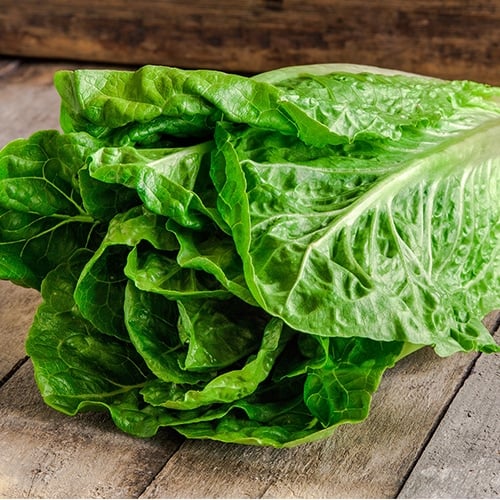
Romaine lettuce is distinguished by its large, sturdy, dark green leaves, which serve as an excellent base for many salads. It offers a refreshing but slightly bitter taste that pairs well with a wide range of ingredients, and it is often referred to as the best lettuce for salad. When purchasing romaine lettuce, you have two main options: romaine hearts or whole heads. Romaine hearts, which are the inner leaves of romaine lettuce, are smaller and slightly yellow with a crisp, crunchy texture. If you're looking for more variety, whole heads of romaine provide more substance. They contain both the heart and outer leaves, offering a range of textures, flavors, and visual appeal.
- Also known as: Cos lettuce
- Used for: Caesar salads, wedge salads
- Area of origin: Mediterranean region
2. Butterhead Lettuce
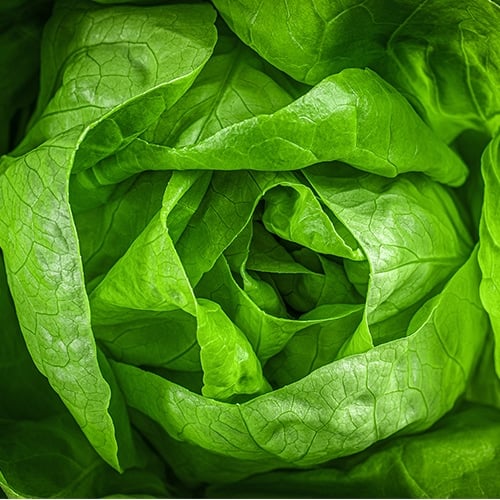
Butterhead lettuce is characterized by its soft, light green leaves, and its smooth texture is sometimes compared to spinach. Because of its leaves, many consider it the best lettuce for wraps. Unlike spinach, butterhead lettuce has a buttery, slightly sweet taste. It comes in two major varieties: Boston lettuce and Bibb lettuce. Boston lettuce is larger than Bibb lettuce, forming loose, round heads with crinkled leaves that are tender and delicate. Conversely, Bibb lettuce is sweeter and features smaller, more compact heads. The leaves of Bibb lettuce are smooth and velvety to the touch.
- Also known as: Butter lettuce, Boston lettuce, Bibb lettuce
- Used for: Light salads, lettuce wraps
- Area of origin: Mediterranean region
3. Iceberg Lettuce
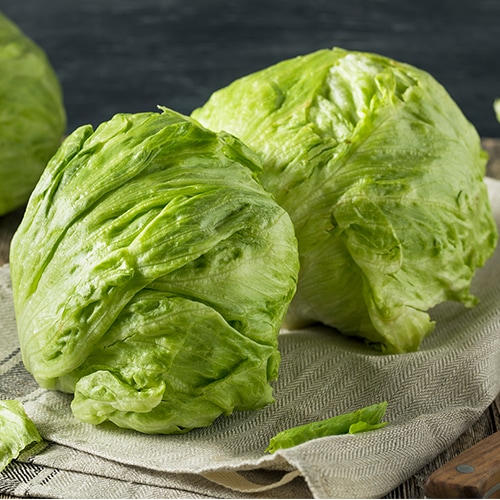
Iceberg lettuce is one of the most popular types of lettuce. Also called crisphead lettuce, it features tightly packed leaves that contribute to a satisfying crunch. It is less expensive than other types of lettuce and holds up well during storage, saving establishments money. Iceberg lettuce is 95% water and has a mildly sweet taste, often described as crisp and refreshing. It is known for its ability to retain its firmness even when combined with dressings or sauces.
- Also known as: Crisphead lettuce
- Used for: Wedge salads, sandwich toppings, burger toppings
- Area of origin: Eastern Europe, Western Asia
4. Little Gem Lettuce
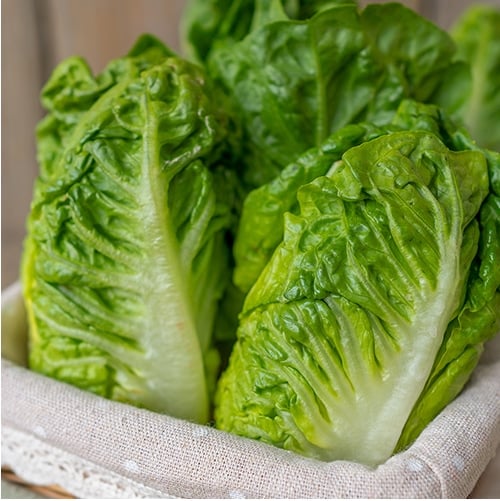
Little gem lettuce is a cross between romaine and butterhead lettuce. It features the crisp texture of romaine and hints of the sweet flavor of butterhead, lending itself to a wide range of culinary uses. In terms of appearance, little gem lettuce bears the most resemblance to smaller varieties of romaine lettuce. Because of its compact size, sturdy build, and distinct curled leaves, it is excellent for holding salad dressings and other assorted toppings.
- Also known as: Baby gem
- Used for: Sandwich toppings, wrap ingredients
- Area of origin: Britain
5. Frisee Lettuce
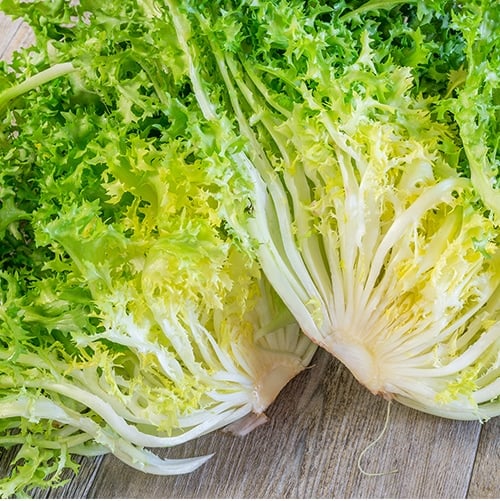
Frisee lettuce is instantly recognizable due to its thin, frizzy leaves and distinctive yellow and green color, making it popular among chefs and food enthusiasts. While the stem of frisee lettuce is crunchy and firm, the leaves are soft and delicate, adding contrast and complexity to dishes. It features an earthy, peppery taste with a hint of bitterness, pairing well with bold flavors. It's important to note that frisee is a member of the chicory family of greens and is technically classified as an endive, though many still consider it a type of lettuce.
- Also known as: Curly endive
- Used for: Salads
- Area of origin: Mediterranean region
6. Escarole Lettuce
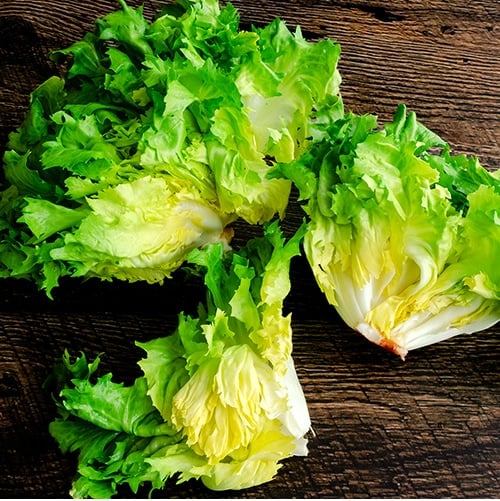
Escarole is a flat-leaved endive and a member of the chicory family. It features large, crisp leaves that resemble many types of lettuce, especially butterhead, but is distinguished by its slightly crumpled edges. Escarole's flavor is mildly bitter and pairs well with sweet and savory flavors. This green is a staple in Italian cuisine and is often used in soups like Italian wedding soup, as well as stews and sautés.
- Also known as: Broad-leaved endive
- Used for: Salads, stews
- Area of origin: Mediterranean region
7. Radicchio
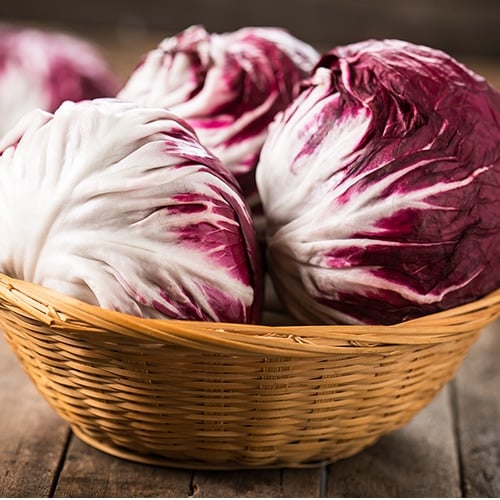
Radicchio, a type of chicory, is characterized by its striking purple color and distinct white veins, which add visual appeal to dishes. Its rich, crisp leaves have a bitter and slightly spicy taste, resulting in unique flavor and texture. It comes in several varieties, including Chioggia and Castlefranco. Chioggia has sweeter, longer leaves, while Castlefranco features red and green specks. When cooked, radicchio's flavor changes to become slightly sweet.
- Also known as: Red chicory, Castlefranco
- Used for: Salads
- Area of origin: Northern Italy
8. Arugula
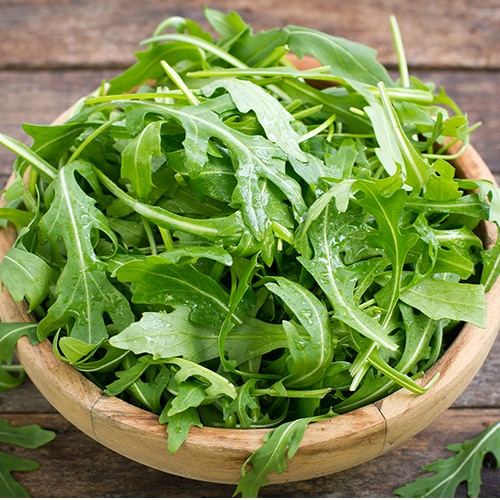
While it is commonly included in salad mixes and is a popular green, arugula is not technically lettuce. Rather, it is a member of the brassica family, with one of its close relatives being the mustard plant. Arugula leaves are delicate, with rounded edges and a distinct green color. It features an earthy, slightly peppery taste with a hint of nuttiness. While it has many uses, this green is commonly featured in Italian and Greek cuisine.
- Also known as: Italian cress
- Used for: Salads, pasta, pesto
- Area of origin: Mediterranean region
9. Mache Lettuce
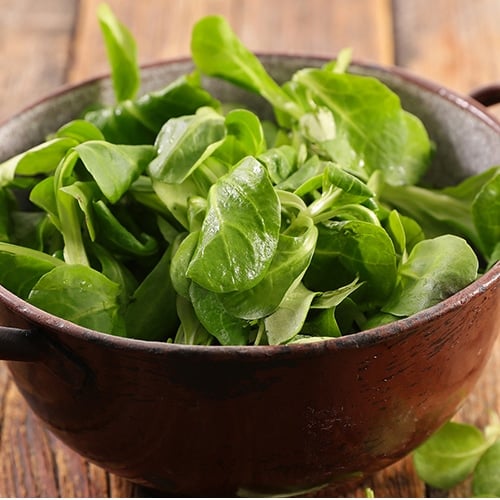
Mache lettuce features small, delicate leaves and a thin stem. Because of its delicate leaves, mache requires careful handling and preparation. Dark green in color, it boasts a sweet, herbal, slightly nutty flavor that complements ingredients without overpowering them. It is regarded as a specialty green and is often featured in high-end recipes. There are over 200 varieties of mache, each with subtle differences.
- Also known as: Field lettuce, corn salad
- Used for: High-end salads
- Area of origin: Mediterranean region
10. Oak Leaf Lettuce
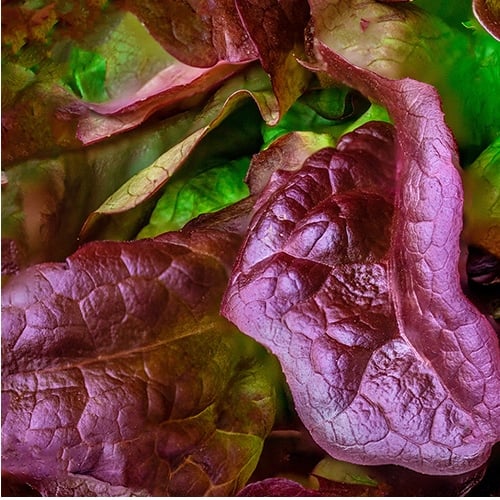
Named for its resemblance to the leaves of an oak tree, oak leaf lettuce is versatile and visually appealing. It has dark green leaves and a delicate, slightly spongy texture. In terms of flavor, this variety of lettuce is mild and slightly nutty. Oak leaf lettuce comes in both green and red varieties, allowing you to add variety to your visual presentations and making it an excellent choice as a garnish.
- Also known as: Oakleaf lettuce
- Used for: Salads, salad mixes
- Area of origin: France
11. Mesclun Lettuce
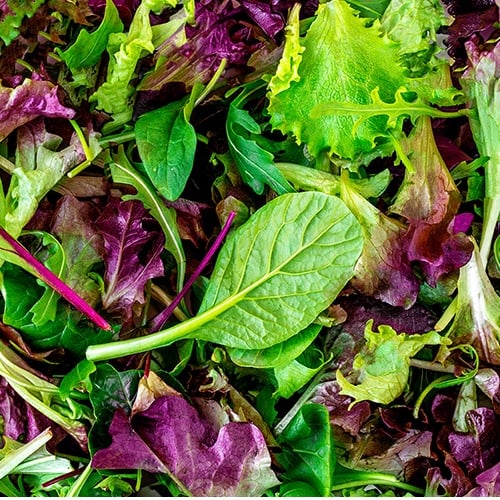
Mesclun lettuce, also called spring mix, is not a single variety, but rather a combination of several lettuce leaves. It allows for quick salad preparation and ensures consistent flavor and texture across your menu. Its contents can vary, but the most common inclusions in mesclun mix include romaine lettuce, oak leaf lettuce, radicchio, and arugula. Though mesclun's flavor will vary depending on what is in it, most mixes have a slightly bitter flavor.
- Also known as: Spring mix
- Used for: Easy salad prep
- Area of origin: France
12. Looseleaf Lettuce
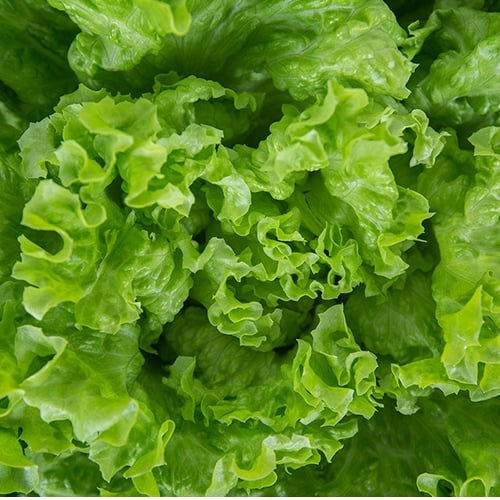
Looseleaf lettuce gets its name because it does not form a head. It is characterized by its large, uneven, ruffled leaves and crunchy stem and features a mild, slightly sweet flavor. Its ruffled leaves give it visual appeal, and it is a great choice for salad presentations or to be used as a garnish.
- Also known as: Batavia lettuce, green leaf lettuce
- Used for: Lettuce wraps, soups
- Area of origin: Mediterranean region
Whether preparing salads, making sandwiches, or searching for the perfect garnish, lettuce adds freshness, texture, and color as you craft your menu. Different lettuce varieties lend themselves to different dishes, and understanding what sets them apart can significantly enhance your culinary experience. By familiarizing yourself with the different types of lettuce available, you can choose the type that best suits your needs and ensure that your signature dishes impress your guests.






